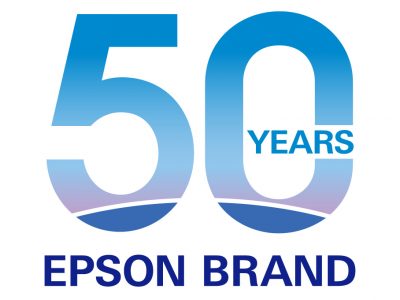Choosing the Most Engaging Technology for the Learning Environment
Over recent years, technology has revolutionised the education of young people in progressive countries such as Singapore. A far cry from the days of blackboards and overhead projectors, today’s young learners have grown up with smart phones, tablets, laptops and other devices – thus it’s logical that they embrace the interactive technologies now intrinsic to their learning environments.

Projector and display technologies, touch screen and pen drawing capabilities, and more – classrooms have evolved into centres of interaction and collaboration, infusing lessons with fun and wonder, and empowering teachers to creatively bring lessons to life. Indeed, according to BECTA, an advisory body for educational technologies in British schools, interactive displays for teaching brings the distinct benefits of increased enjoyment and motivation.
Yet, benefits aside, with the huge array of computers, tablets, flat screens and projectors available – educators face fresh challenges in deciding on the appropriate technology for their visual environments. At the forefront of technology in education for decades, Epson’s research and development of environments that stimulate young learners provide a deep understanding of the key considerations when choosing interactive technology for schools.
Transforming teaching – the SEA perspective
Throughout Singapore, projectors such as the Epson ultra-short throw interactive projector are helping teachers to better engage students. These new heights of interactivity have even opened up a Singapore school to new education-based Java applets that can be used to better illustrate concepts and make lessons more interesting.
As interactive projectors increase in popularity, they are set to continuously revolutionise teaching by exposing learners to attractive visuals and interactive features.
Interactive projectors – or flat panel displays?
Both interactive projectors and interactive flat panel display technologies allow users to interact with the display – much like your smartphone. Some people perceive flat panel displays as brighter, whereas interactive projectors offer larger screens, engaging a bigger class size. Let’s compare:
- Cost: Interactive projectors are a fraction of the price of interactive flat panels – offering attractive cost benefits towards education budgets.
- Glare: Flat panel displays suffer from glare caused by classroom lighting or daylight – which is not present on interactive projector screens.
- Flexibility and scalability: Interactive projectors project quality images onto almost any solid surface – instantly turning dry erase boards, walls and tabletops into interactive surfaces. In contrast, interactive flat panels introduce space restrictions.
- Image quality: The interactive projector stands out for picture quality. Touch-enabled projected images can go up to 100’’, twice the size of an expensive 50’’ touchscreen flat panel. Plus, resolution of interactive projectors is available beyond Full HD, for vivid clarity.
- Screen size: Of paramount importance in big classroom settings, the larger screens offered by interactive projectors deliver magnified content to every student in the classroom.
Why does screen size matter so much?
A recent study conducted in US, UK, and Singapore by Radius Research* found that more than half of the students are unable to read certain contents on a 70” flat panel display, effectively excluding them from the learning experience. This is an alarming conclusion for schools that have adopted flat panel displays of this size, or smaller. The fact of the matter is – bigger is better.
Using a 100” Epson interactive projector screen creates a participatory environment in which teachers and students can contribute, making learning engaging and productive. Furthermore, the versatility and connectivity of Epson interactive projectors help teachers to utilize content from multiple sources with a touch of a button – connecting a maximum of 50 student laptops, tablets or smartphones to the interactive projector.
This revolutionary approach helps to break barriers within the classroom, providing new opportunities to co-create and interact.

*Based on research conducted by Radius Research in US, UK and Singapore. The research was done using a 70-inch class 4k resolution flat panel in a 22′ x 27′ / 22’ x 26’ / 22’ x 30’ classroom-style arrangement respectively. When asked to copy down six short items of information from slides displayed, 58% of students from US, 61% from UK, and 57% from Singapore, aged 12-22, copied at least one item incorrectly.
How to select the right display for any classroom?
When selecting the correct display for a classroom, it’s vital to consider 3 key factors:
- Display Size and the distance from which students are viewing the display.
- The 4/6/8 Rule – the common standard for establishing maximum viewing distance based on display screen size, for comfortable viewing.
- Classroom Configurations – square, wide or deep? Find out how to configure for the class size.
Use the Epson 4/6/8 rule simulator here to calculate the right display size for your classroom.
Display Size
How to use room height and student distance to define the required display size.
4/6/8 Rule explained
Discover the system for establishing comfortable viewing distance for each class member.
Classroom Configurations
How to determine the ‘shape’ of a classroom, and configure appropriately.
Posts You May Like
Get Social With Us
Related Posts
Enhance the Customer Experience in Brick-and-Mortar Stores with Epson LightScene Projectors
Following the volatile economic environment of 2020, we saw many retail stores close their shutters for good. With pandemic restrictions kicking in and consumer habits changing, we’ve seen shoppers leaning towards online shopping, causing big names in Southeast Asia such as Topshop, Esprit and Robinsons in Singapore, to close their physical stores for good. This begs the question – are brick-and-mortar stores still relevant in the age of digital transformation?
Work and Play with Epson CO-FH02 and EH-TW6250 Smart Projectors
Since the pandemic, more companies and business owners are opting to give up their permanent office spaces in favour of more affordable alternatives, such as co-working spaces. To ensure that the quality of sales pitches remain unaffected even when offices have been downsized or moved to a co-working space, investing in a versatile portable projector would be an effective and affordable solution for business owners, educators, and freelancers.
Epson Southeast Asia Unveils Latest Projection Technologies at InfoComm Southeast Asia 2022
Back in November 2022, Epson Southeast Asia unveiled its latest projection technologies at InfoComm Southeast Asia 2022, after the event was put on a two-year hiatus due to the pandemic.

 *Based on research conducted by Radius Research in US, UK and Singapore. The research was done using a 70-inch class 4k resolution flat panel in a 22′ x 27′ / 22’ x 26’ / 22’ x 30’ classroom-style arrangement respectively. When asked to copy down six short items of information from slides displayed, 58% of students from US, 61% from UK, and 57% from Singapore, aged 12-22, copied at least one item incorrectly.
*Based on research conducted by Radius Research in US, UK and Singapore. The research was done using a 70-inch class 4k resolution flat panel in a 22′ x 27′ / 22’ x 26’ / 22’ x 30’ classroom-style arrangement respectively. When asked to copy down six short items of information from slides displayed, 58% of students from US, 61% from UK, and 57% from Singapore, aged 12-22, copied at least one item incorrectly. When content is clearly visible, students can better comprehend and process the information. These are the factors into consideration to choose the right settings, explained also in the white paper available for download below:
When content is clearly visible, students can better comprehend and process the information. These are the factors into consideration to choose the right settings, explained also in the white paper available for download below:

